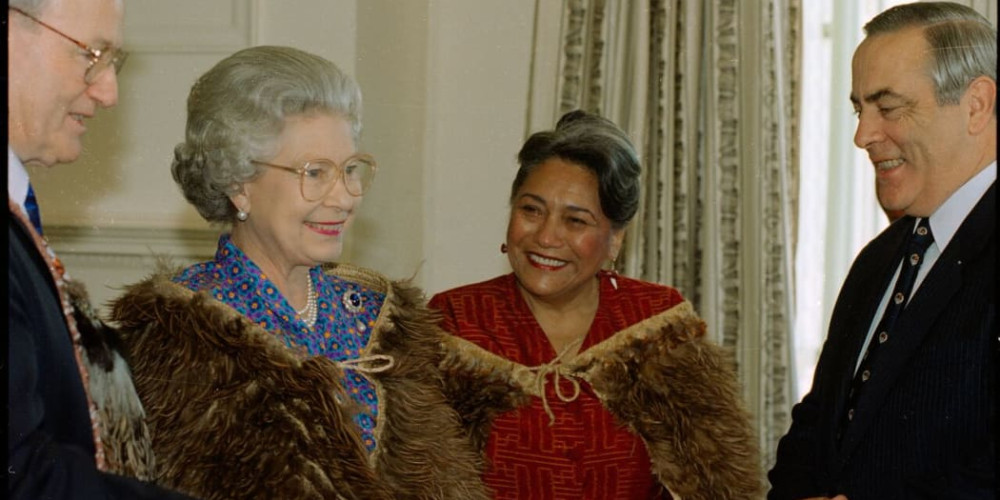
PUBLISHED 09/09/22
Kimihia rangahaua
Kei whea koutou ka ngaro nei!
Tēnā kua riro ki Paerau
Ki te huihuinga o te kahurangi ka oti atu koutou e!
Tangihia te whatumanawa, hotuhotu ake te pūmanawa.
Nei rā te rau wharawhara o te aroha, e pātukituki te ngākau a tangata
Auē taukiri e
E te Arikinui Kuini Irihapeti te tuarua
Ko koe te pakanga kiritahi i te tōtara hoe o mate
Haere, e hoki atu rā…Hoki atu rā ki tua o tāwauwau te kānohi urunga o te rā kua ngaro e
Kua ngaro i te rā nei e.
Me tere atu tō waka tīwai i ngā moana tāpokopoko o te ao
Waihotia mai ō iwi i konei mōteatea ai, tangi ai
Haere, Haere atu rā, haere atu rā
We all awoke to the news that Queen Elizabeth II had passed away overnight. A chapter is closed today on the life of an extraordinary woman pushed into the limelight upon the premature death of her father King George VI. She became queen in February 1952, at age 25, and was 27 at the time of her official coronation in June 1953. The death of Queen Elizabeth II brings to an end a long, complex, and remarkable chapter in the history of Aotearoa New Zealand’s evolution from a colony to independent, bicultural and multicultural nation.
Monarch since age 25, Queen Elizabeth II died at age 96. Her reign saw 15 British prime ministers and she met with 13 U.S. presidents. She presided over the shrinking of the British Empire and the rise of globalization. She anchored the country through uncertainty — and the royal family’s own dramas.
Māori saw the special relationship with the Crown through the Treaty of Waitangi – Te Tiriti Waitangi. From colonial times they had sent delegations to Britain to seek royal support. Each time they had been deflected by imperial officials.
In 1995 the Tainui people agreed to a Treaty settlement. In addition to compensation for land confiscated after the New Zealand Wars, they wanted a formal apology from the Queen. ‘Such an apology would be constitutionally unique’, Prime Minister Jim Bolger recalled. ‘Her Majesty is not in the habit of apologising for the misdeeds of those who acted in the Crown’s name.’ The politicians devised a solution that was acceptable to both Tainui and Buckingham Palace. Once the bill containing the formal apology was passed by the House, the Queen, who was visiting New Zealand for the Commonwealth Heads of Government Meeting, gave the Royal Assent by signing the legislation herself instead of the Governor-General doing so.
As Britain remembers and honours Queen Elizabeth’s 70 years on the throne, Aotearoa New Zealand mourns her passing. During her 70 years of reign, Queen Elizabeth visited Aotearoa 10 times. In a press release, Prime Minister Jacinda Adern stated, “What stood out for her the most was the level of knowledge and care the Queen had for New Zealand. The prime minister recalled gifting the Queen a picture from a visit to New Zealand about 50 years prior, where she was captured laughing in the back of the vehicle.
“I did not for a moment expect her to recall anything of the moment that photo was taken. “Not only could she remember the visit, she could remember what was making her laugh.”
Ka taka ngā whetū, ka taka te marama.
Moe mai ra e te Ariki Kuini Irihapeti te Tuarua
Photo Reference: Alexander Turnbull Library, EP/1995/4375B/33A-F, photograph by John Nicholson. Queen Elizabeth II and the Māori Queen Dame Te Atairangikaahu were photographed together when Queen Elizabeth signed into law the Waikato Raupatu Claims Settlement Act in 1995
